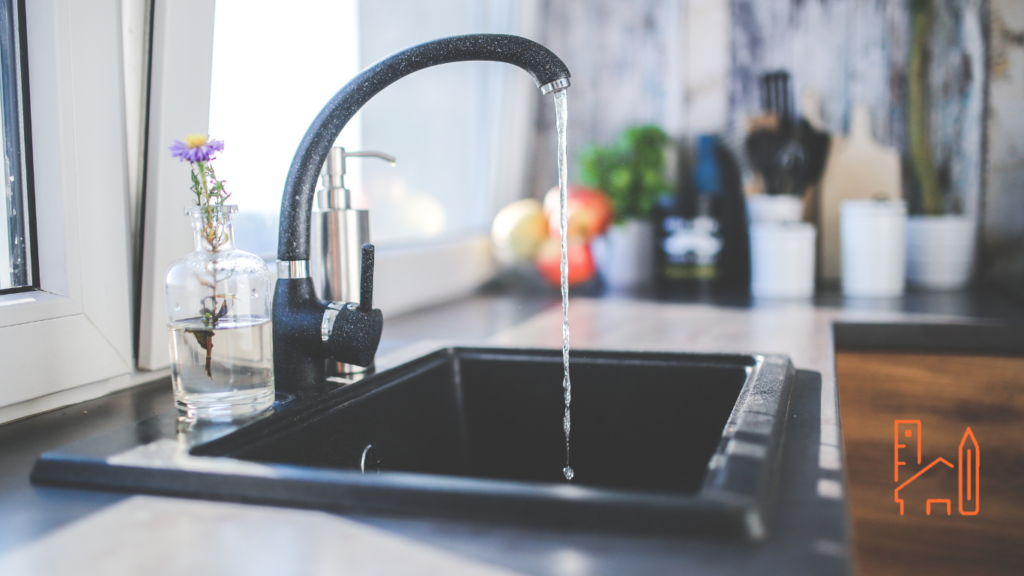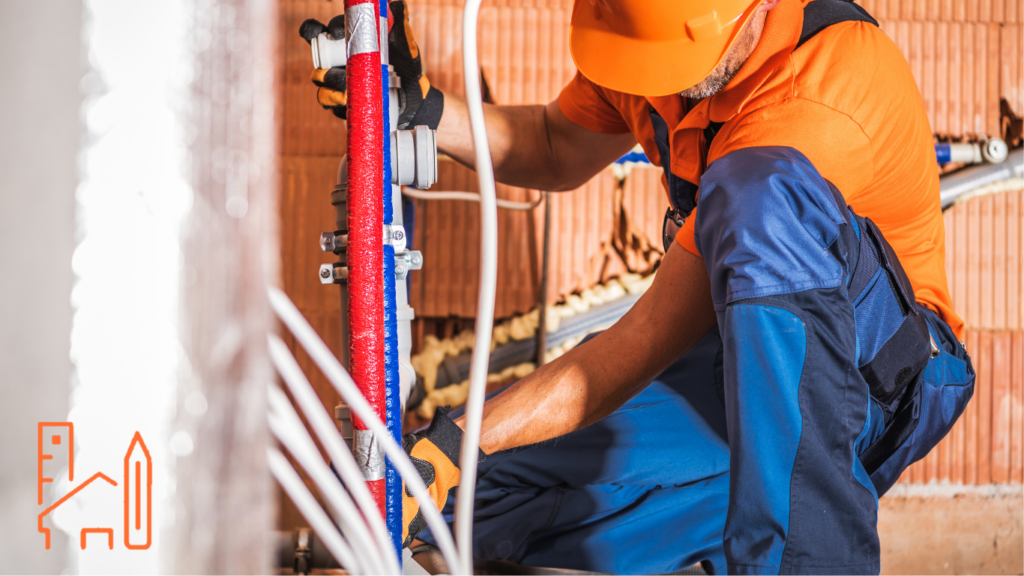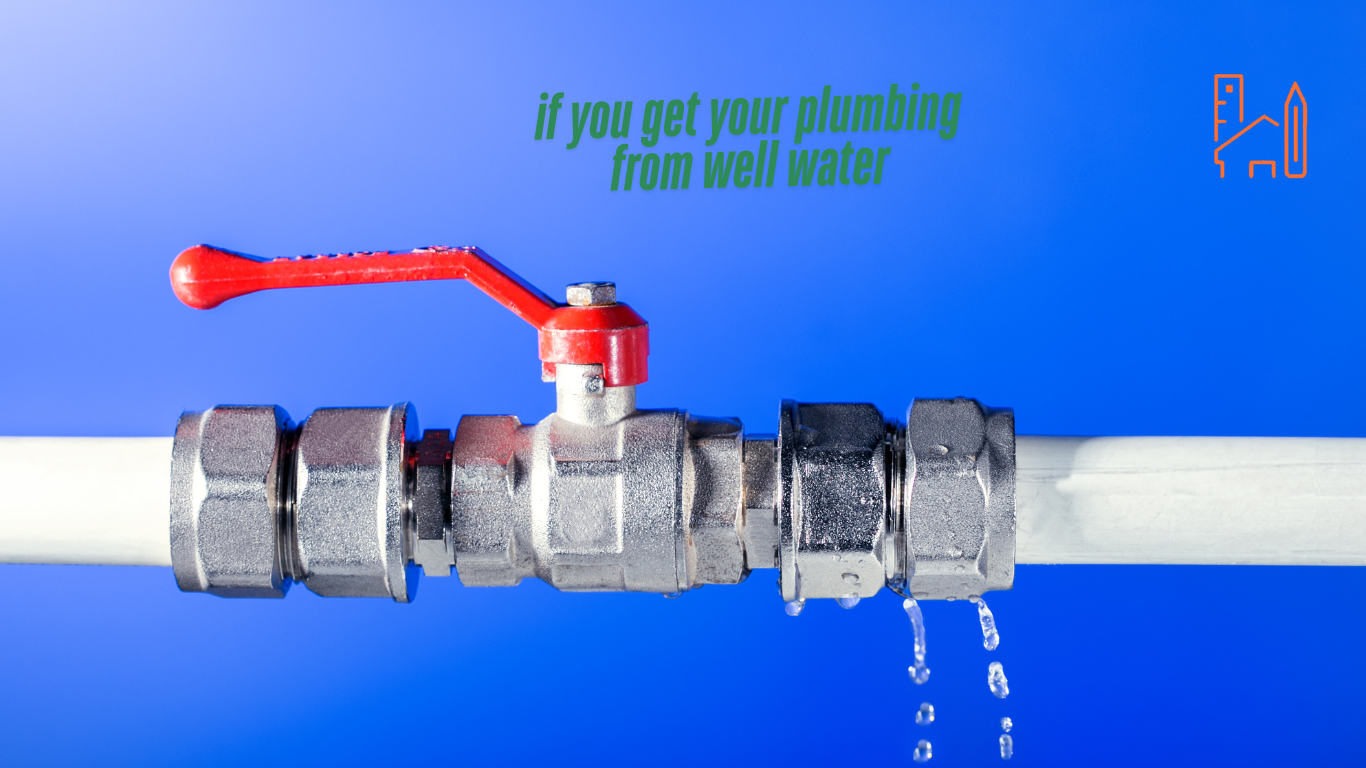Introduction: Why Well Water Plumbing is Different
If you get your plumbing from well water, you’re entering a world of unique water management that stands apart from municipal systems. While well water offers independence and cost savings, it comes with complexities that homeowners must navigate. From sourcing to treatment and delivery, each stage requires a personalized approach.
Additionally, well water’s natural composition varies by location, leading to common issues like hard water, iron, or sulfur odors. Solutions such as water softeners, reverse osmosis, or UV sterilizers are often necessary.
Understanding these nuances is key to maintaining an efficient and functional plumbing system if you get your plumbing from well water.

1. Understanding the Basics of Well Water Plumbing
If you get your plumbing from well water, it’s essential to grasp how the system works and the key components that make it function. Unlike municipal water systems, where water is delivered through an extensive network of pipes, well water systems are self-contained, drawing water directly from underground sources and delivering it to your home. This process involves several critical elements that work in harmony to ensure a steady supply of clean, pressurized water.
1. The Well
2. The Pump
3. Pressure Tank
4. Filtration and Treatment Systems
5. Plumbing Lines and Fixtures
Understanding these components is the first step to maintaining an efficient and reliable plumbing system if you get your plumbing from well water.
2. Essential Equipment for Well Water Systems
If you get your plumbing from well water, having the right equipment is crucial for a safe, reliable water supply. Unlike municipal systems, well water requires you to handle everything, from pumping to filtration. Here’s a quick guide to the must-have tools for maintaining your well system.

1. Well Pump
A strong, reliable pump is essential for drawing water from your well. If you get your plumbing from well water, ensuring the pump is in good working condition is key to maintaining a steady water supply. Whether it’s a submersible or jet pump, regular inspections and timely replacements ensure smooth operation, especially if you get your plumbing from well water.
2. Pressure Tank
This device maintains consistent water pressure in your home, reducing wear on your pump and preventing water hammer (pressure surges). Proper sizing based on your water demand is key.
3. Water Filtration System
Since well water can contain contaminants, a filtration system is vital. Common types include:
- Sediment Filters: Remove sand, silt, and dirt.
- Activated Carbon Filters: Eliminate chlorine, odors, and organic compounds.
- Water Softeners: Address hard water by replacing calcium and magnesium with sodium.
- Iron Filters: Remove excess iron to prevent staining.
- UV Purifiers: Kill bacteria and pathogens without chemicals.
- Reverse Osmosis: Provide pure water for drinking and cooking.
4. Water Testing Kits
Regular water testing helps you identify contaminants and monitor water quality, ensuring your filtration systems work effectively.
5. Pump and System Controls
Automated controls like pressure switches and float valves regulate pump operation, ensuring efficiency and protecting against damage.
6. Backup Power Supply
A generator or battery backup is essential for power outages, keeping your well system running smoothly even when electricity is down.
Equipping your system with these tools ensures both reliability and safety when you get your plumbing from well water.
3. Common Challenges with Well Water Plumbing
If you get your plumbing from well water, you might face unique challenges compared to municipal water systems. Since well water is untreated, its quality can vary significantly based on environmental factors. Here are common issues homeowners encounter:
1. Hard Water
Hard water, with high mineral content like calcium and magnesium, can cause scale buildup in pipes, appliances, and leave stains on fixtures.
2. Sediment and Debris
Well water often contains sand and particles that can clog pipes and appliances, reducing efficiency and water pressure.
3. Contaminants and Pathogens
Bacteria, viruses, and pollutants like nitrates or pesticides may be present in untreated well water, posing health risks without proper filtration.
4. Iron and Manganese
These minerals can stain fixtures and affect the taste and odor of your water, along with causing sludge buildup in pipes.
5. Low Water Pressure
Poorly maintained pumps or pressure tanks can lead to inconsistent or low water pressure, especially when multiple fixtures are used.
How to Address Hard Water Problems
If you get your plumbing from well water, hard water can be a significant challenge. Here’s how to handle it effectively:
1. Install a Water Softener
A water softener removes calcium and magnesium, preventing scale buildup and protecting your plumbing. This is especially important if you get your plumbing from well water, as hard water can cause significant damage over time. Installing a water softener ensures your system runs smoothly and lasts longer, which is essential if you get your plumbing from well water.
2. Descale Appliances and Fixtures
Regularly clean appliances like water heaters with vinegar or descaling agents to remove mineral buildup.
3. Use a Sediment Pre-Filter
Pair a sediment filter with a water softener to prevent debris from interfering with softening.
4. Test Water Hardness
Use a water testing kit to monitor and adjust your water softener settings for optimal performance.
5. Protect Hot Water Systems
Install a water softener for hot water systems to avoid scale on heating elements and enhance efficiency.
By addressing these challenges proactively, you can protect your plumbing and enjoy clean, efficient well water.
4. Maintenance Tips for Well Water Plumbing

Proper maintenance is the cornerstone of keeping your well water plumbing system running smoothly and reliably. If you get your plumbing from well water, neglecting upkeep can lead to problems like equipment failure, water contamination, and costly repairs. Thankfully, a regular maintenance routine can help you avoid these headaches and ensure a steady flow of clean water to your home. Below are actionable top tips for eco-friendly action plumbing maintenance that not only keep your system in top shape but also reduce your environmental impact.
1. Schedule Regular Water Testing
Water quality can change over time due to environmental factors, well construction issues, or nearby land use. Test your well water annually for bacteria, nitrates, and other potential contaminants. If your water is prone to sediment, hard water, or high iron levels, more frequent testing may be necessary.
2. Inspect and Service the Well Pump
The well pump is the engine of your system, and any malfunction can disrupt your water supply. Inspect your pump for signs of wear, unusual noises, or inconsistent water pressure. If your pump is over a decade old, consider having it professionally serviced or replaced.
3. Check the Pressure Tank
A well-functioning pressure tank maintains consistent water pressure and protects the pump from overuse. Inspect the tank for leaks, check the air pressure with a gauge, and ensure it operates within the recommended range (usually 40-60 psi).
4. Clean and Replace Filters
Filters are critical for keeping sediment, minerals, and contaminants out of your water supply. Replace sediment filters every 3-6 months or as recommended by the manufacturer. Clean water softeners and other filtration systems regularly to ensure peak performance.
5. Flush the System Periodically
Sediment buildup can reduce water flow and damage appliances. Flushing your system periodically helps clear out debris from the well, pipes, and water heater. It’s a simple yet effective way to maintain your system’s efficiency.
6. Inspect Plumbing for Leaks or Corrosion
Leaks and corrosion can compromise your plumbing system’s integrity. Regularly inspect pipes, joints, and fixtures for any signs of water damage, rust, or mineral buildup. Address issues immediately to prevent more significant problems.
7. Protect Your Well from Contamination
Ensure your well is properly sealed and located away from potential contamination sources like septic tanks, chemical storage, or agricultural runoff. Keep the well cap in good condition and clear the area around the well of debris.
Tools You’ll Need for Maintenance
Having the right tools on hand makes maintaining your well water plumbing system easier and more efficient. Here’s a list of essential tools and their uses:
1. Water Testing Kit
- Purpose: To test for bacteria, nitrates, pH levels, hardness, and contaminants.
- Use: Dip test strips or collect water samples for analysis. Helps identify water quality issues promptly.
2. Pressure Gauge
- Purpose: To monitor the pressure tank and ensure consistent water pressure.
- Use: Attach to the tank to measure pressure levels, ensuring they stay within the recommended range.
3. Pipe Wrench
- Purpose: To tighten or loosen pipe fittings and connections.
- Use: Handy for fixing leaks or replacing worn-out plumbing components.
4. Sediment Filter Wrench
- Purpose: To open filter housings for cleaning or replacing cartridges.
- Use: Use this tool to access sediment and carbon filters with ease.
5. Cleaning Solutions
- Purpose: To descale and sanitize components like water heaters, pipes, and softeners.
- Use: Vinegar or specialized cleaning agents remove mineral deposits and kill bacteria.
6. Submersible Pump Removal Tool
- Purpose: To remove or lower the well pump for inspection or replacement.
- Use: Essential for professional-level maintenance or deep cleaning tasks.
7. Bucket and Hose
- Purpose: To flush the system and remove debris from pipes or water heaters.
- Use: A simple yet effective way to keep your system clean and clear of buildup.
8. Inspection Camera
- Purpose: To check the interior of your pipes, well casing, or other hard-to-reach areas.
- Use: Identifies leaks, blockages, or damage that might not be visible from the surface.
By incorporating these tools and following a consistent maintenance schedule, you can ensure the long-term efficiency and safety of your plumbing system if you get your plumbing from well water.
5. Real-World Applications of Well Water Plumbing Knowledge

Understanding well water plumbing isn’t just about maintaining a clean water supply—it has practical implications in various aspects of daily life and specialized scenarios.
- Home Efficiency and Cost Savings
With proper filtration and maintenance, homeowners enjoy clean, reliable water without the recurring costs of municipal water bills. Addressing issues like hard water and sediment also protects appliances, reducing repair expenses. - Irrigation Systems
Well water systems are invaluable for agriculture and landscaping. Farmers and gardeners can leverage well water for crop irrigation, while advanced filtration prevents clogging in drip systems and sprinklers. - Emergency Preparedness
If you get your plumbing from well water, having the right tools and knowledge ensures access to clean water even during power outages or disasters. Backup generators and manual pumps keep the water flowing when it matters most. - Property Expansion Projects
When expanding a home or adding features like pools, knowledge of your well’s capacity and system upgrades ensures sufficient water flow and pressure to meet increased demand. - Sustainable Living
For those pursuing off-grid or eco-friendly lifestyles, mastering well water plumbing enables complete independence from municipal systems, promoting sustainable water use tailored to individual needs.
These real-world applications demonstrate the versatility and importance of understanding your well water plumbing system, transforming challenges into opportunities for convenience and cost-effectiveness.
Conclusion: Making the Most of Well Water Plumbing
Well water plumbing offers independence, cost savings, and sustainability, but it requires proactive care and attention. From tackling hard water and sediment to maintaining filters and pumps, each step ensures a reliable, high-quality water supply. Tips for maintaining water heaters are also essential to prevent scale buildup from hard water, which can reduce efficiency and lifespan. By understanding the challenges and applying the right solutions, you can protect your system, save money, and enjoy the benefits of well water for years to come. Take charge of your plumbing today—test your water, upgrade your equipment, and embrace the peace of mind that comes with a well-maintained system!
FAQs About Well Water Plumbing
Test your well water annually for bacteria and other contaminants. If you get your plumbing from well water, regular testing is crucial to ensure your water remains safe and clean. If you notice changes in taste, odor, or appearance, test more frequently. This proactive approach will help you catch potential issues early, especially if you get your plumbing from well water.
2. Why does my water have a sulfur smell?
A sulfur smell often indicates the presence of hydrogen sulfide gas, which can be treated with filtration systems like activated carbon or specialized filters. This is a common issue if you get your plumbing from well water, and addressing it with the right filtration system can significantly improve water quality. Make sure to install the appropriate filters if you get your plumbing from well water to eliminate the odor and ensure clean, fresh water.
3. How can I prevent hard water from damaging my plumbing?
Install a water softener to remove calcium and magnesium, preventing scale buildup in pipes and appliances. This is especially important if you get your plumbing from well water, as hard water can cause significant damage over time. By installing a water softener, you can protect your system and ensure long-lasting performance if you get your plumbing from well water.
If you’re interested in washing machine drain plumbing, click below to learn more!


